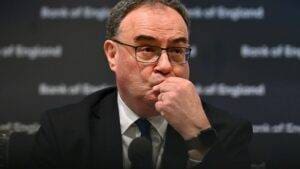Why Transparency and Trust Are Crucial for UK FX Brokers in 2025


In 2025, foreign-exchange markets are as lively, and as unforgiving, as ever. Sterling still whipsaws when the Bank of England surprises, shipping invoices still land in dollars, and your CFO’s inbox still fills with “exclusive rate” emails from brokers promising to beat the market.
If you’re a UK business owner or finance lead, you know the pain: every tenth of a penny on a £5 million transfer can decide whether the quarter ends in the black or the red.
But here’s what’s changed: after a string of regulatory upgrades, high-profile cyber-incidents, and an explosion of AI-driven execution tools, transparency and trust have become the make-or-break factors when choosing an FX partner. In other words, the badge on a broker’s website no longer impresses anyone; what matters is whether you can see exactly how they treat your money and your data, and whether you believe them. Below, we unpack the five most important reasons why transparency and trust sit at the heart of UK FX brokers today.
Post-Brexit Regulation Has Teeth
Back in 2021, the Financial Conduct Authority warned that it would “raise the bar” for non-bank FX brokers operating in the UK. Four years on, the rhetoric has become action. The FCA’s updated prudential regime (IFPR) now forces brokers to:
- Hold more regulatory capital relative to client balances.
- Publish clearer disclosures on how they safeguard client funds.
- Report execution performance, slippage, spreads, and fill times, every quarter.
For you, the customer, that means you finally have hard numbers to compare. But transparency is a two-way street: reputable brokers will volunteer that data up front, in plain English, during the pitch, not buried in a PDF on page 37. If a broker skips the subject or hides behind jargon, treat it as a red flag.
Regulation alone, though, isn’t a guarantee. Consider London-based Argentex, whose trading shares were suspended in April 2025 amid a rapid liquidity collapse triggered by margin calls after FX volatility, ultimately leading to a rescue acquisition for just £3 million. Both regulated firms and smaller intermediaries can fail if custodial strength and risk controls are insufficient. The survivors were the ones whose clients trusted their custodial arrangements and stress-tested them well before trouble hit.
2. Hidden Mark-Ups Hurt More Than Ever
The cost of hedging currency exposure has risen significantly in response to elevated volatility: GBP/USD volatility surged from 5.7% to 8.1% over 2024, while EUR/USD volatility rose from 5.2% to 7.3%. Corporate demand for hedging increased sharply, and forward-premia terms widened, reflecting higher pricing in forwards and options markets. Against that backdrop, opaque spreads and surprise fees do real damage.
Historically, many brokers quoted “zero commission” but added 40–60 basis-point mark-ups to the interbank rate. In 2025, with open-banking APIs allowing near-real-time benchmark feeds, there’s no excuse for that opacity. Best-in-class brokers now show:
- The live mid-market rate.
- Their fixed spread (e.g., 15 bps).
- Any additional platform or payment fee before you click “Book”.
A growing number even provide post-trade Transaction Cost Analysis (TCA) that reveals your all-in cost versus a time-stamped mid-rate. That level of candour creates trust, and it saves money.
What to Ask Your Broker:
- “Can you show me yesterday’s average spread for GBP/USD and GBP/EUR?”
- “Will you commit to a maximum spread in writing?”
- “Do you provide post-trade TCA and, if so, how often?”
If those questions feel awkward, remember: every other B2B service cloud hosting, logistics, energy quotes transparent prices. FX shouldn’t be different.
3. Technology Exposes Weak Execution
Machine-learning algorithms now scan liquidity venues in milliseconds and sweep orders to whichever bank or ECN offers the best fill. Brokers who invested early in smart-order-routing can execute large tickets with minimal slippage. Those that still rely on voice trading or a single liquidity provider cannot.
The technology gap is no longer a geeky footnote; it’s a trust issue. If your broker can’t demonstrate that it uses:
- Multi-dealer streaming prices.
- Smart rebalancing to avoid “last look” rejects.
- Real-time credit checks that keep your orders live.
…then you can’t be sure the price you see is the price you’ll get.
Signs of Transparent Execution Quality:
- Execution-quality dashboards are visible in your portal.
- Average reject rate under 3 % on firm quotes.
- Independent verification, some brokers partner with third-party analytics firms to audit fills.
In practice, transparency about execution builds confidence that your hedging policy will work as designed, especially when markets gap on macro news.
4. Cyber-Security Has Moved Up the Risk Register
Three high-profile hacks in 2023-24, one involving a UK FinTech payroll provider, put B2B payments under the microscope. In 2025, finance teams now view cyber-risk as part of the FX selection process. After all, a forward contract is worthless if settlement instructions are hijacked.
Trustworthy brokers disclose their security stack:
- SOC 2 Type II or ISO 27001 certification.
- Hardware-security-module (HSM) storage of API keys.
- Multi-factor authentication (MFA) is enforced on every user login.
- 24/7 Security Operations Centre (SOC).
They also talk candidly about incident-response playbooks. If a prospective broker shrugs and says, “We’re FCA-regulated, so don’t worry,” keep shopping; regulation is not a cyber strategy.
5. Cultural Alignment and Relationship Depth
Numbers matter, but so does the human element. The best FX brokers in 2025 invest in relationship managers who understand your sector, seasonal cash-flows and board-level risk appetite. That cultural alignment builds the trust necessary to stick to a hedging discipline even when headlines scream panic.
Consider the difference:
- Broker A runs quarterly strategy calls, shares market scenarios, and re-tests your hedge ratios in a worst-case sterling devaluation.
- Broker B waits for you to call, then pitches an “urgent” forward contract to lock in today’s price.
Which feels more transparent? Which earns your trust? The answer is obvious.
Tips for Evaluating Relationship Quality:
- Check staff turnover. If your account manager changes every six months, continuity suffers.
- Demand references from clients in your industry.
- Gauge the broker’s willingness to advise against trades that don’t fit your policy; that’s the acid test of integrity.
How to Put This All Together
Building a transparent, trusted FX relationship isn’t about ticking boxes; it’s about weaving these factors into a due-diligence process that mirrors your other critical vendor reviews. Here’s a streamlined, four-step playbook:
- Shortlist brokers based on FCA status and published execution data.
- Run a pilot: trade a small volume, scrutinise TCA, and request a back-office process walk-through.
- Conduct a cyber-risk audit: insist on penetration-test summaries and disaster-recovery (DR) policy extracts.
- Negotiate service-level agreements (SLAs) that codify spreads, settlement timelines and compliance reporting.
Complete those steps, and you’ll quickly separate brokers who operate with genuine transparency from those who just mimic it.
The Bottom Line
In 2025, UK FX markets reward preparation and punish complacency. Volatility remains elevated, cross-border payments are faster, and regulators are blunt. Against that backdrop, transparency and trust are no longer “soft” qualities they are operational necessities.
Choose brokers who:
- Disclose costs and execution metrics in black and white.
- Invest in modern routing technology and robust cyber-security.
- Cultivate long-term relationships founded on honest, data-driven advice.
Do that, and your company can approach currency exposure with confidence, not guesswork. In a world where every fraction of a penny counts, the cost of opaque spreads, weak controls or flimsy IT security is simply too high.
So, next time a broker cold-calls with a “special rate,” ask the hard questions. The transparent, trustworthy ones will welcome them, and that’s precisely who you want on your side.
Read more:
Why Transparency and Trust Are Crucial for UK FX Brokers in 2025






